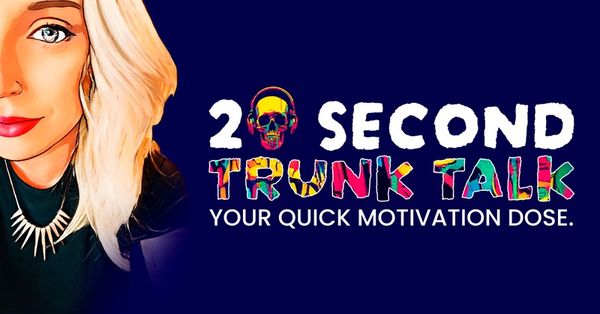Avid Avoidance

Hello avoidance, my old friend, you’ve come to talk to me again. You and I have gotten pretty close lately, haven’t we?
The mountains of responsibilities, passions, and necessary “agendas” are there, but I’d rather graciously dismiss them and completely disregard their importance, valid or not.
We all find ourselves here; it can be because we have too much shit on our plates, or because we’re in a mental funk, or it can simply be that we’re under-stimulated.
Some of our jobs don’t allow us to completely ignore reality because deadlines exist, we don’t get paid if we don’t meet them, but let’s be real if those deadlines and duties didn’t exist, would our drive alone get things done?
I decided to dive deeper into the psychology behind avoidance last week when I found myself nestled up in a cozy corner of Starbucks, wondering why I was avoiding important things. In this edition of Unraveled, we share perspectives in hopes that you can pinpoint the type of avoidance you cling to most, differentiate between temporary distractions and avoidance, and arm you with what a professional therapist suggests overcoming it.
5 Types of Avoidance
1. Protective Avoidance: This type involves actions aimed at protecting oneself from certain emotions or experiences. It can manifest as rituals, cleaning routines, or even obsessive-compulsive behaviors. The goal is to create a sense of safety within your inner world.
2. Cognitive Avoidance: Cognitive avoidance is the effort to hide, distract, or ignore worrisome thoughts or emotions. It may involve distracting oneself, daydreaming, or focusing only on the positive aspects of a situation.
3. Somatic Avoidance: Somatic avoidance refers to steering clear of situations that trigger physical responses similar to anxiety or stress. People may avoid situations that cause their bodies to react in ways that make them uncomfortable.
4. Situational Avoidance: This form of avoidance involves staying away from people, places, or activities that remind an individual of a traumatic event or cause significant distress.
5. Substitution Avoidance: This is like playing emotional musical chairs. You swap one emotion for another, like trading in sadness for an angry outburst. It’s like an emotional trade-up program, but not so helpful.
What is the difference between temporary distraction and avoidance?
Distraction is “temporary” avoidance. It is a useful tool when our emotions or distress are so high, and we feel too dysregulated at the moment, to be able to confront the cause. In these moments, we might feel flooded and unable to respond in an effective way. In these situations, we need some time or distance to self-soothe and regulate our emotions. It is not problematic as a “sometimes” coping skill, but if we always rely on distraction and never return to confront the difficult emotions, then we never achieve resolution.
If the purpose of your act or behavior is to avoid feeling an emotion that might be painful or difficult to feel, then the behavior is likely avoidance.
How to Overcome Avoidance:
Recognize Your Stress Response Patterns
Begin by noticing how you react to stressful situations. Pay attention to your immediate actions when faced with stressors. Do you find yourself reaching for a glass of wine after a tough day at work or scrolling through social media to zone out?
Identify Avoidance Habits
Ask yourself if these actions are a way to avoid or escape discomfort. Consider if you're using these habits to distract yourself temporarily or if they're helping you avoid facing underlying issues.
Boost Your Motivation for Change
Understand how your current behaviors might be hindering your progress. Assess if they're getting in the way of your long-term goals or affecting your relationships. Consider the pros and cons of these habits—do they offer a brief relief but ultimately make the problem worse?
Recognize Your Emotional Responses
Take note of the thoughts and feelings that arise when you resort to these habits. Be specific about the discomfort you experience. Name the emotions and acknowledge their existence.
Connect with Your Physical Sensations
Shift your attention from thoughts to physical sensations. Feel where these emotions manifest in your body and describe those feelings. Is it a heavy, overwhelming sensation, or a sharp, pinpointed one? Acknowledge the physicality of your emotional experience.
Confront the Urge to Avoid
Remind yourself that these emotions will pass, and you are safe. Picture emotions like ocean waves—they rise and fall, but eventually, they recede. Don't succumb to the urge to escape or avoid them.
Explore Value-Driven Actions
When the emotional intensity starts to lessen, engage in activities that align with your values or promote self-care. This could be exercising, journaling, or confiding in a supportive friend or family member.
Reach Out for Professional Support
Consider seeking guidance from a licensed therapist. Cognitive processing therapy is a proven method to navigate and overcome trauma-related thoughts, offering lasting benefits for dealing with PTSD.
I know this one was heavy, my friends, but my hope and prayer is that IF you find yourself if any of these patterns, you can look in the mirror and tell yourself, “Hey, you don’t suck & you’re a total badass,” and that you can look to one of the 8 suggestions above to start to dig your way out again. As one of my favorite personal development gurus, Brenden Burchard says:
“Avoidance is the best short-term strategy to escape conflict, and the best long-term strategy to ensure suffering.”
Let's get real with ourselves as we continue to unravel together. Are we avidly avoiding things that could improve our lives and the lives of others? If so, let’s get to the root of it and come out stronger or get the professional help we need.
Resources:
1. https://psychcentral.com/health/types-of-avoidance-behavior#when-to-seek-help




